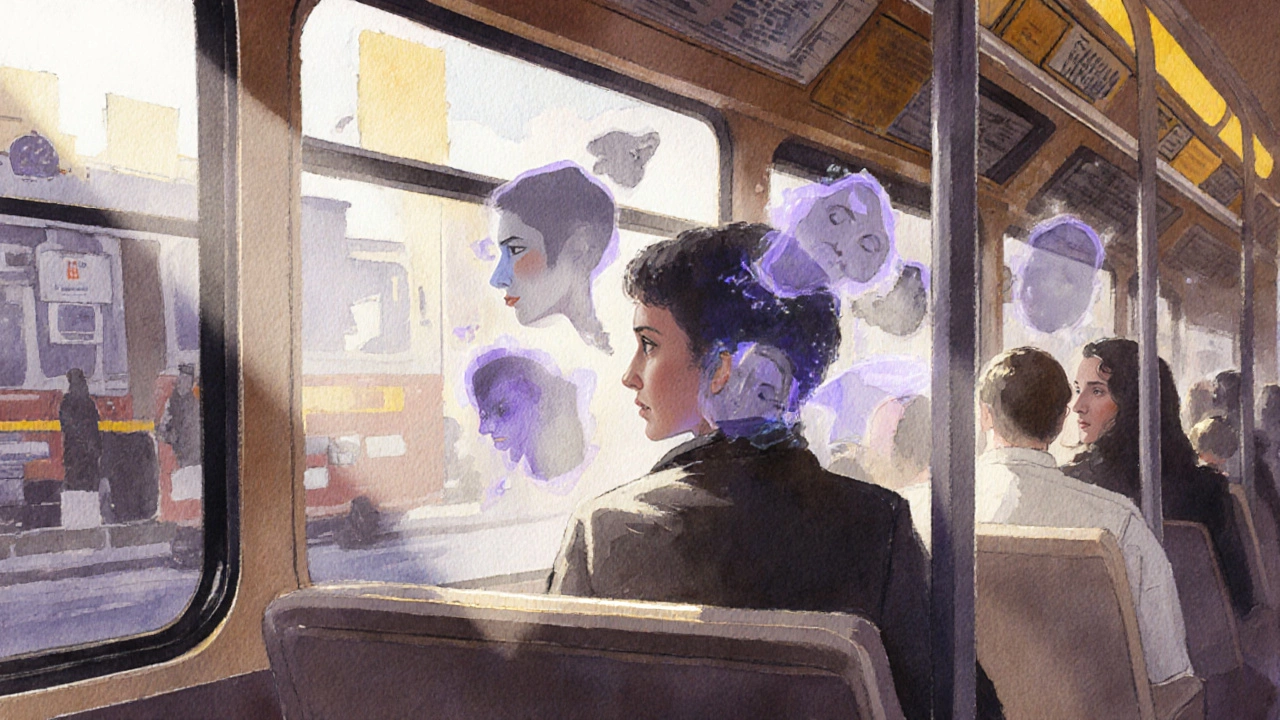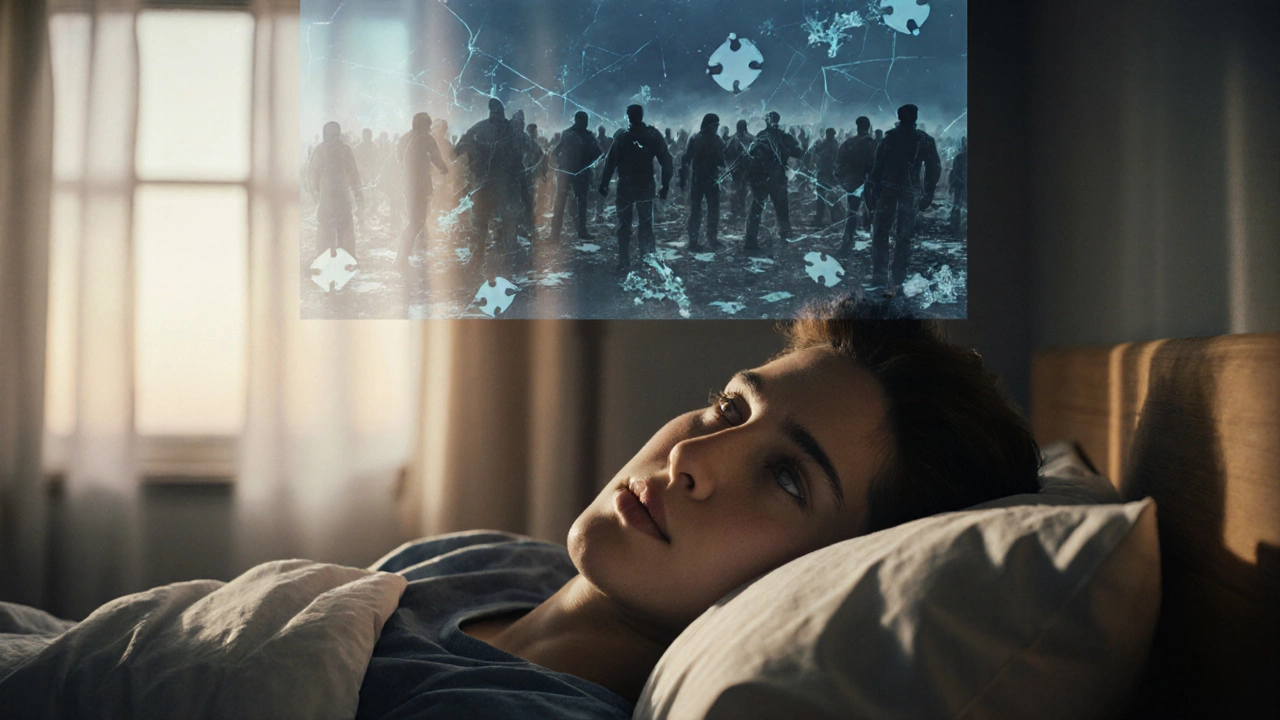Mental Illness Comparison Tool
Understanding Mental Illness Severity
Compare the most challenging mental health conditions based on key metrics including symptom impact, functional impairment, treatment complexity, and suicide risk. This tool helps you understand the relative challenges of each disorder.
Schizophrenia
Onset typically in late teens to early 30s. Requires consistent medication management.
Bipolar Disorder
Type I includes full manic episodes; Type II includes hypomania plus major depression.
Borderline Personality Disorder (BPD)
Standard therapy requires weekly commitment for up to a year.
Severe Major Depressive Disorder
WHO ranks depression as leading cause of disability worldwide.
Obsessive-Compulsive Disorder (OCD)
Average onset age is late teens; only 40-60% achieve symptom relief.
Imagine waking up every day feeling like your brain is a battlefield you never signed up for. For millions, that’s not a metaphor-it’s the reality of living with the hardest mental illnesses. Understanding which conditions are the toughest helps families, clinicians, and anyone struggling to find the right support.
Why Some Mental Illnesses Feel Unbearable
Not all diagnoses affect daily life the same way. The hardest disorders typically share three traits:
- Persistent, intrusive symptoms that don’t fade with rest.
- Unpredictable mood or thought patterns that can swing from one extreme to another within minutes.
- High functional impairment-the person may struggle to hold a job, maintain relationships, or even complete simple self‑care tasks.
When these criteria stack, the illness can dominate every waking hour. Below we explore the five conditions most often cited as the toughest to manage.
1. Schizophrenia
Schizophrenia affects roughly 1% of the global population. Its hallmark is a break from reality-hallucinations, delusions, and disorganized thinking. Imagine trying to hold a conversation while hearing voices that aren’t there or believing you’re being watched constantly. These symptoms can make basic tasks, like shopping or riding a bus, feel like navigating a minefield.
Key attributes:
- Onset usually in late teens to early 30s.
- Positive symptoms (hallucinations, delusions) and negative symptoms (flat affect, social withdrawal).
- Lifetime risk of suicide around 5%-significantly higher than the general population.
Treatment blends antipsychotic medication, psychotherapy, and community support. Even with optimal care, many people experience chronic relapses, making schizophrenia one of the toughest conditions to live with.
2. Bipolar Disorder
Bipolar disorder is characterized by dramatic mood swings-from manic highs that fuel reckless risk‑taking, to depressive lows that drain energy and hope. The rapid shifts can be terrifying because the same person can be a high‑energy visionary one day and a bedridden struggler the next.
Critical data points:
- TypeI includes full manic episodes; TypeII includes hypomania plus major depression.
- Approximately 2.4% of adults in the U.S. receive a bipolar diagnosis.
- Up to 60% of untreated patients attempt suicide at least once.
Stabilizing mood often requires a cocktail of mood stabilizers (lithium, valproate), atypical antipsychotics, and regular psychotherapy. The difficulty lies in finding the right medication balance without triggering side‑effects like weight gain or tremors.
3. Borderline Personality Disorder (BPD)
BPD brings intense emotional instability, fear of abandonment, and impulsive behaviors such as self‑harm or substance abuse. A single perceived rejection can trigger a cascade of panic, anger, and self‑destructive actions.
Important facts:
- Prevalence estimates range from 1% to 6% of the adult population.
- High comorbidity with mood disorders, anxiety, and eating disorders.
- Standard therapy-Dialectical Behavior Therapy (DBT)-requires weekly commitment for up to a year.
The condition’s "hardest" label comes from the constant emotional turbulence and the need for long‑term, intensive psychotherapy, which many patients struggle to access due to cost or stigma.
4. Severe Major Depressive Disorder (MDD)
While many people experience occasional low mood, severe MDD is a relentless, all‑consuming darkness. Symptoms include persistent sadness, anhedonia, severe fatigue, and thoughts of death that can persist for months.
Key indicators:
- World Health Organization ranks depression as the leading cause of disability worldwide.
- Approximately 7% of adults experience a major depressive episode each year.
- Suicide risk spikes dramatically when depression is untreated-up to 15% of severe cases end in death.
Treatment often mixes antidepressants, cognitive‑behavioral therapy (CBT), and sometimes electroconvulsive therapy (ECT) for treatment‑resistant cases. The difficulty stems from the illness’s ability to sap motivation, making it hard for sufferers to stick with treatment plans.

5. Obsessive‑Compulsive Disorder (OCD)
OCD forces people into repetitive, anxiety‑driven rituals. A simple thought-like checking if the stove is off-can spiral into dozens of compulsions that eat up hours each day.
Critical statistics:
- Lifetime prevalence of about 2% globally.
- Average onset age is late teens.
- Only 40‑60% of patients achieve meaningful symptom relief with first‑line therapy.
Effective treatment combines exposure and response prevention (ERP) therapy with selective serotonin reuptake inhibitors (SSRIs). The challenge lies in confronting feared thoughts-something many patients find terrifying, often leading to dropout.
Comparing the Top Five Hardest Disorders
| Disorder | Core Symptoms | Functional Impairment (1‑10) | Treatment Complexity | Suicide Risk |
|---|---|---|---|---|
| Schizophrenia | Hallucinations, delusions, disorganized thought | 8 | High - antipsychotics + rehab | 5% |
| Bipolar Disorder | Manic highs, depressive lows | 7 | Moderate‑High - mood stabilizers + therapy | 10‑15% |
| Borderline Personality Disorder | Emotional instability, self‑harm, fear of abandonment | 7 | High - long‑term DBT | 8‑10% |
| Severe Major Depressive Disorder | Persistent sadness, anhedonia, suicidal thoughts | 9 | Moderate - meds + psychotherapy ± ECT | 15%+ |
| Obsessive‑Compulsive Disorder | Intrusive obsessions, compulsive rituals | 6 | Moderate - ERP + SSRIs | 2‑5% |
How to Support Someone Living with These Disorders
Knowing a condition is tough is only half the battle. Here’s a practical checklist for caregivers, friends, and coworkers:
- Educate yourself - read reliable sources, attend support groups, and ask clinicians for recommended literature.
- Validate feelings - avoid dismissing symptoms as "just in your head." A simple "I hear you" can reduce isolation.
- Encourage consistent treatment - help set medication reminders, attend therapy sessions when invited, and celebrate small progress.
- Watch for warning signs - sudden withdrawal, talk of self‑harm, or extreme mood swings merit immediate professional outreach.
- Maintain boundaries - protect your own mental health; seek therapy if the caregiver burden feels overwhelming.
When Professional Help Is Essential
Every one of the disorders discussed can spiral without proper care. If you notice any of the following, act quickly:
- Persistent thoughts of suicide or self‑injury.
- Inability to perform basic self‑care (eating, bathing) for more than a few days.
- Severe psychotic episodes (hearing voices, believing you’re in danger).
- Risks to others-such as aggressive behavior during manic phases.
Contact a crisis line, go to the nearest emergency department, or call a trusted mental‑health professional. Early intervention can prevent long‑term deterioration.

Quick Takeaways
- Schizophrenia, bipolar disorder, BPD, severe MDD, and OCD rank among the hardest mental illnesses due to persistent, disabling symptoms.
- Functional impairment scores are typically 6‑9 out of 10, indicating major daily challenges.
- Treatment often needs a blend of medication, specialized psychotherapy, and community support.
- Suicide risk is markedly higher across all five, underscoring the need for vigilant monitoring.
- Supportive environments, informed caregivers, and timely professional help improve outcomes dramatically.
Frequently Asked Questions
Frequently Asked Questions
Can someone with these disorders lead a normal life?
Yes, many individuals achieve stability with the right combination of medication, therapy, and social support. Success often looks different for each person, but meaningful work, relationships, and hobbies are attainable goals.
What’s the biggest hurdle in treating these illnesses?
Adherence. Side‑effects, stigma, and the illnesses themselves can make it hard to stay consistent with treatment plans, which leads to relapses.
Are there lifestyle changes that help?
Regular sleep, balanced nutrition, and stress‑reduction techniques (mindfulness, gentle exercise) can reduce symptom severity, but they’re supplements-not replacements-for clinical care.
How do I know if a loved one needs urgent help?
Any mention of self‑harm, sudden withdrawal, or psychotic episodes warrants immediate professional contact-call emergency services or a crisis helpline without delay.
Is medication always required?
For most severe disorders, medication plays a critical role in stabilizing brain chemistry. Some milder cases can manage with therapy alone, but this should be decided by a qualified psychiatrist.
Next Steps for Readers
If you’ve recognized any of the described patterns in yourself or someone you care about, take these actions:
- Schedule a mental‑health evaluation with a licensed psychiatrist or clinical psychologist.
- Ask about specific treatment modalities-antipsychotics for schizophrenia, mood stabilizers for bipolar, DBT for BPD, etc.
- Join a local or online support community; peer experiences provide practical coping tips.
- Set up a crisis plan: contact numbers, trusted friends, and steps to take if thoughts of self‑harm appear.
Remember, the hardest mental illnesses are manageable when you pair professional care with a supportive environment. Knowledge, patience, and early action are your strongest allies.
